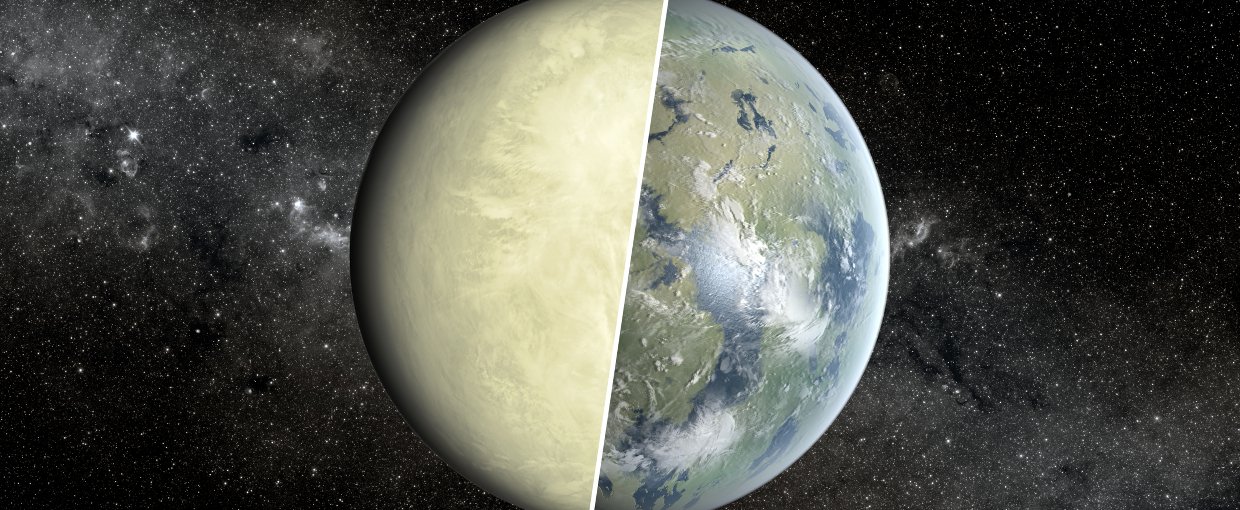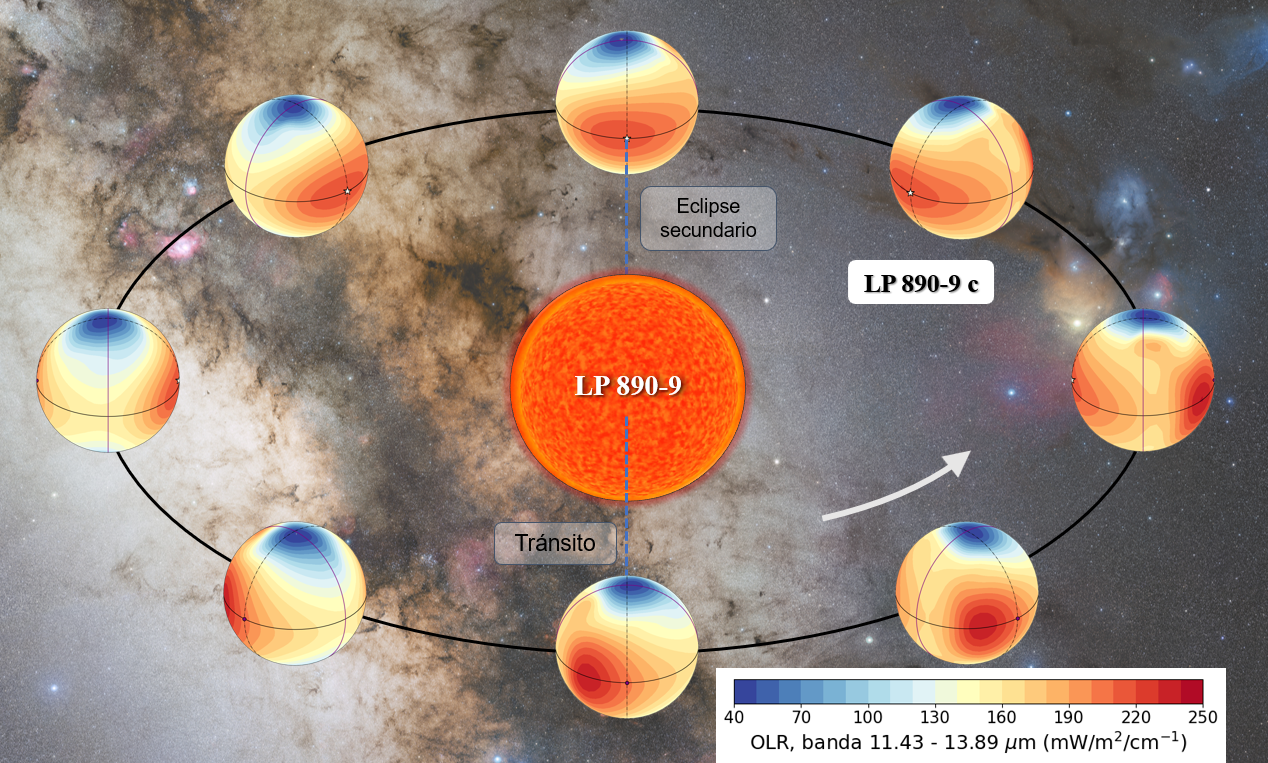The exoplanet LP 890-9 c, a laboratory to distinguish distant twins of Venus and Earth
The Institute of Astrophysics of Andalusia (IAA-CSIC) participates in the development of a 3D global climate model of the extrasolar planet LP 890-9 c. These models are essential to analyze exoplanets similar to Earth, as well as to study their evolution
With more than 5,400 planets detected around distant stars, one of the current challenges lies in detecting Earth-like planets and studying their atmospheres. But the distance limits the possible observations, and it is necessary to carry out simulations that facilitate the interpretation of the data. Now, an international scientific team is developing a climate model for rocky exoplanets that could answer the following question: if they were observed at a distance of a hundred light-years, how could we tell a Venus-like planet from one like Earth?
The team chose the planet LP 890-9 c, located 106 light-years away and discovered in 2022. With a diameter of 1.37 times that of Earth, the planet orbits a red dwarf star -smaller and cooler than our Sun- at a distance that places it in the habitability zone, the region where the pressure and temperature conditions would allow liquid water to exist on the surface. But it is also very close to the region where a runaway greenhouse effect, such as that seen on Venus, would occur.

The possibility that this planet is like Venus makes it an ideal laboratory to study the atmospheric evolution of Earth-like planets and to explain the climate divergence we observe between Earth and Venus. “Our model is intended to support the interpretation of future observations with the James Webb Space Telescope or the future Extremely Large Telescope (ELT), and will allow us to better characterise what we see in the atmosphere of these planets”, says Diogo Quirino, researcher at the Instituto de Astrofísica e Ciências do Espaço (IA) and first author of the paper. “The simulations presented here are the first step towards such a characterisation, which involves predicting the temperature and atmospheric circulation, and how these influence the observations”.
DIFFERENTIATING "TWIN" PLANETS
Until the 1960s, Venus was considered a possible twin of our planet. Both are in very close regions of the Solar System and have similar sizes and densities, but early missions to the neighbouring planet showed that Venus and Earth exhibit radically different conditions: the atmospheric pressure on Venus is ninety times higher than on Earth, it reaches 475 degrees Celsius at the surface and is covered with a dense layer of sulphuric acid clouds.
“However, it is very possible that both shared similar childhoods, with volcanic activity that released gases and formed atmospheres and, possibly, with liquid water on their surfaces, something we are seeking to confirm with EnVision, the next ESA mission to Venus in which the IAA-CSIC is participating”, says Gabriella Gilli, researcher at the Institute of Astrophysics of Andalusia (IAA-CSIC) and second author of the study. “On Venus, closer to the Sun, the heat must have evaporated the water completely through a runaway greenhouse effect, which generated the inhospitable conditions that exist today”.
Based on the hypothesis that the climate at LP 890-9 c evolved into a modern Venus-like atmosphere, the team simulated it with a surface pressure 92 times higher than Earth's, a chemical composition 96.5% dominated by carbon dioxide, and a global mantle of sulphuric acid clouds.
The study of planets around M dwarf stars (the most common in our galaxy and where most terrestrial-type exoplanets have been found), such as LP 890-9 c, however, presents divergences with respect to our Solar System. In these stars, which are fainter than the Sun, the habitable zone is much closer to the Sun, and the planets in this region show synchronous rotation, with one side in permanent light and the other in permanent darkness. In addition, planets are exposed to the intense activity of red dwarfs, whose coronal mass ejections can sweep away entire atmospheres.
Previous studies indicated, in fact, that carbon dioxide build-up in the atmosphere is one of the likely scenarios for the evolution of Earth-like planets around red dwarf stars. The newly published paper provides predictions of the temperature and wind speed at the top of the clouds, as well as the number of observations needed to characterise the atmosphere of this planet.
"One of the capabilities of 3D models is the calculation of the radiation emitted by the planet in certain regions of the electromagnetic spectrum", says Quirino. The work calculated how the infrared radiation emitted by the planet may vary along its orbit, which could produce patterns associated with the presence of an atmosphere that can be detected in future observations. "The idea of this work is to be prepared for when we detect an analogue of Venus: that we will be able to recognise it as such", concludes Gabriella Gilli (IAA-CSIC).

D. Quirino, G. Gilli et al. "3D Global climate model of an exo-Venus: a modern Venus-like atmosphere for the nearby super-Earth LP 890-9 c". Monthly Notices of Astronomical Society, June 2023.
https://doi.org/10.1093/mnrasl/slad045
Instituto de Astrofísica de Andalucía (IAA-CSIC)
Unidad de Divulgación y Comunicación
Silbia López de Lacalle - sll[arroba]iaa.es - 958230676
https://www.iaa.csic.es
https://divulgacion.iaa.csic.es

